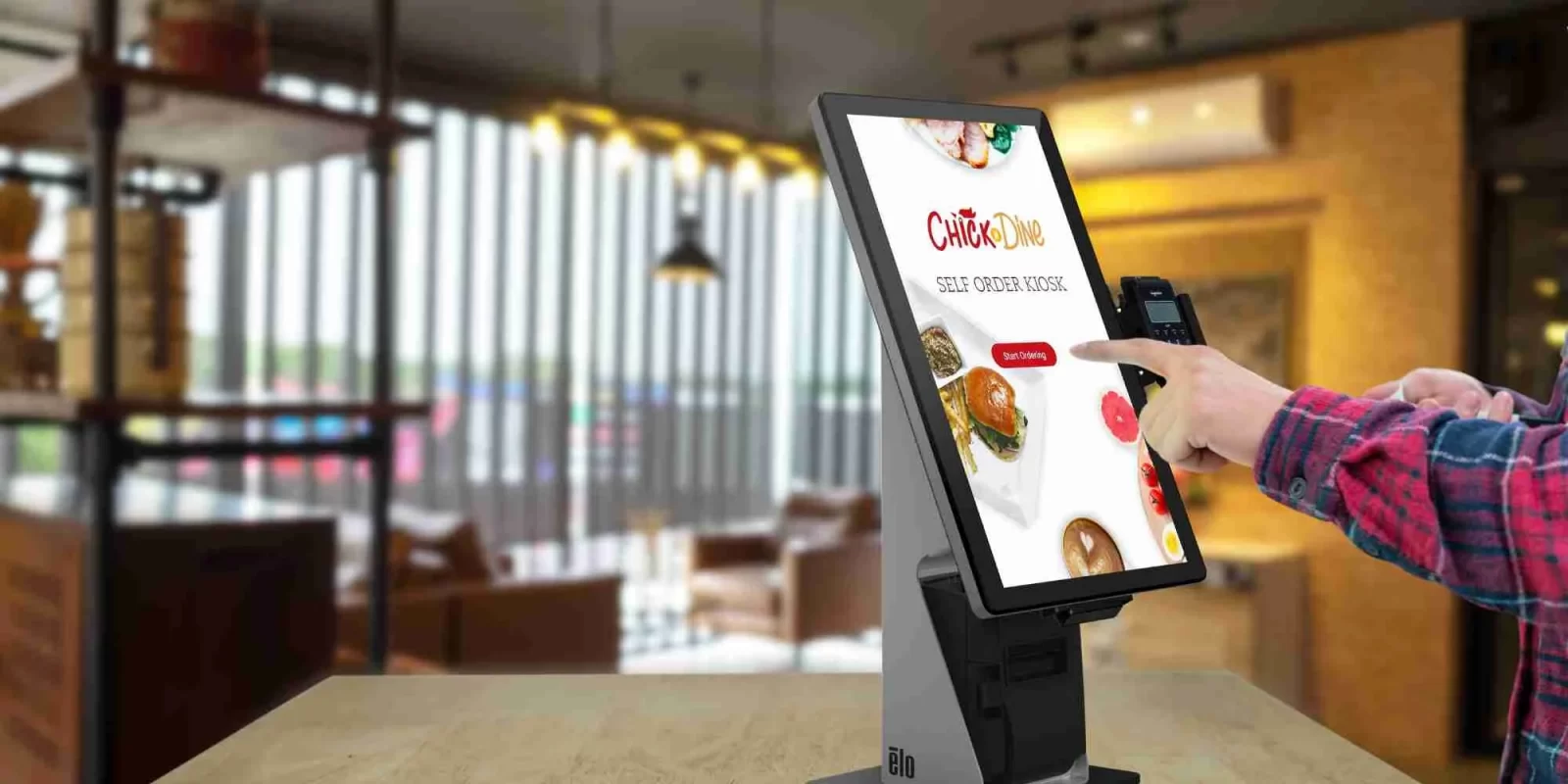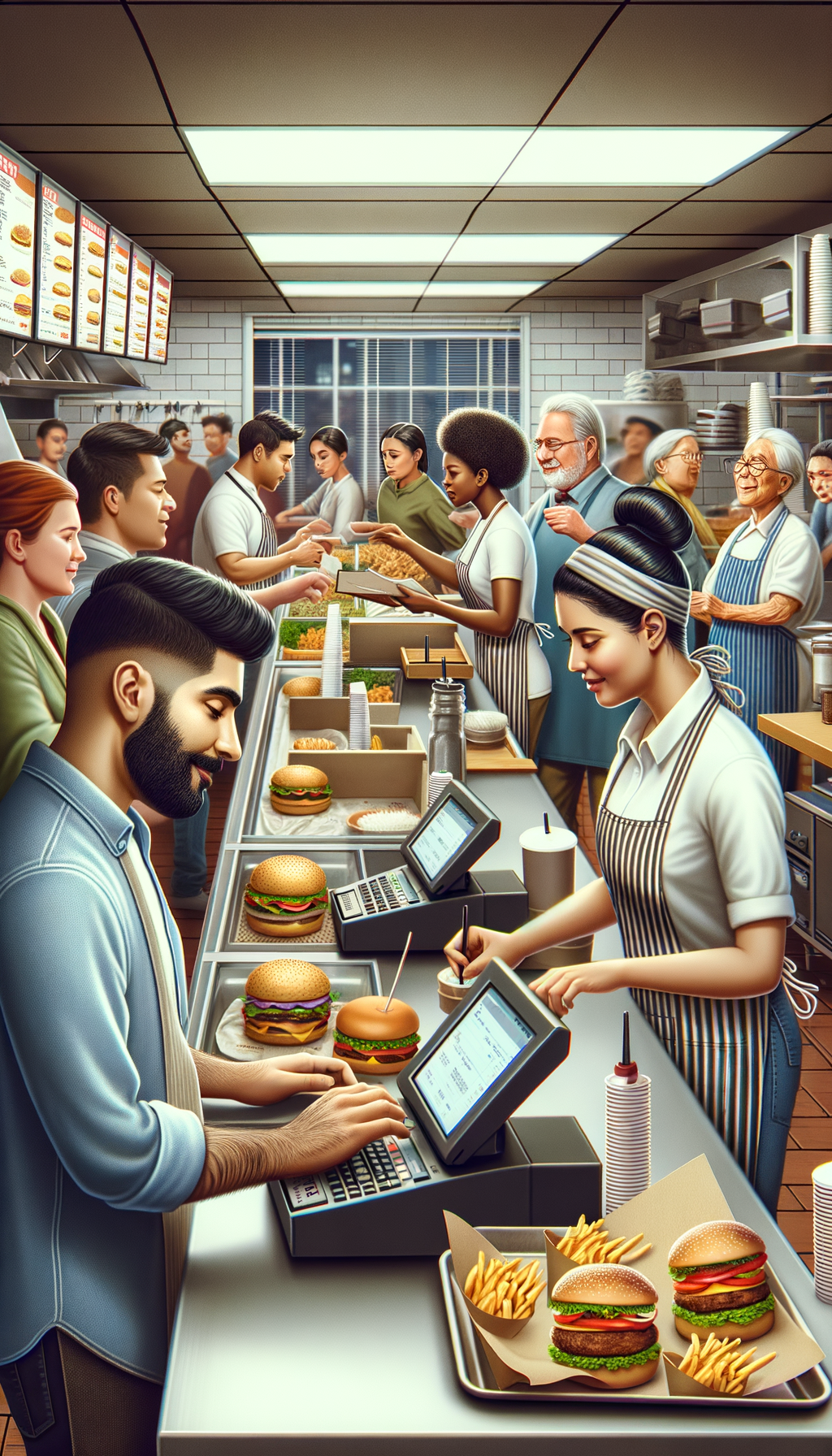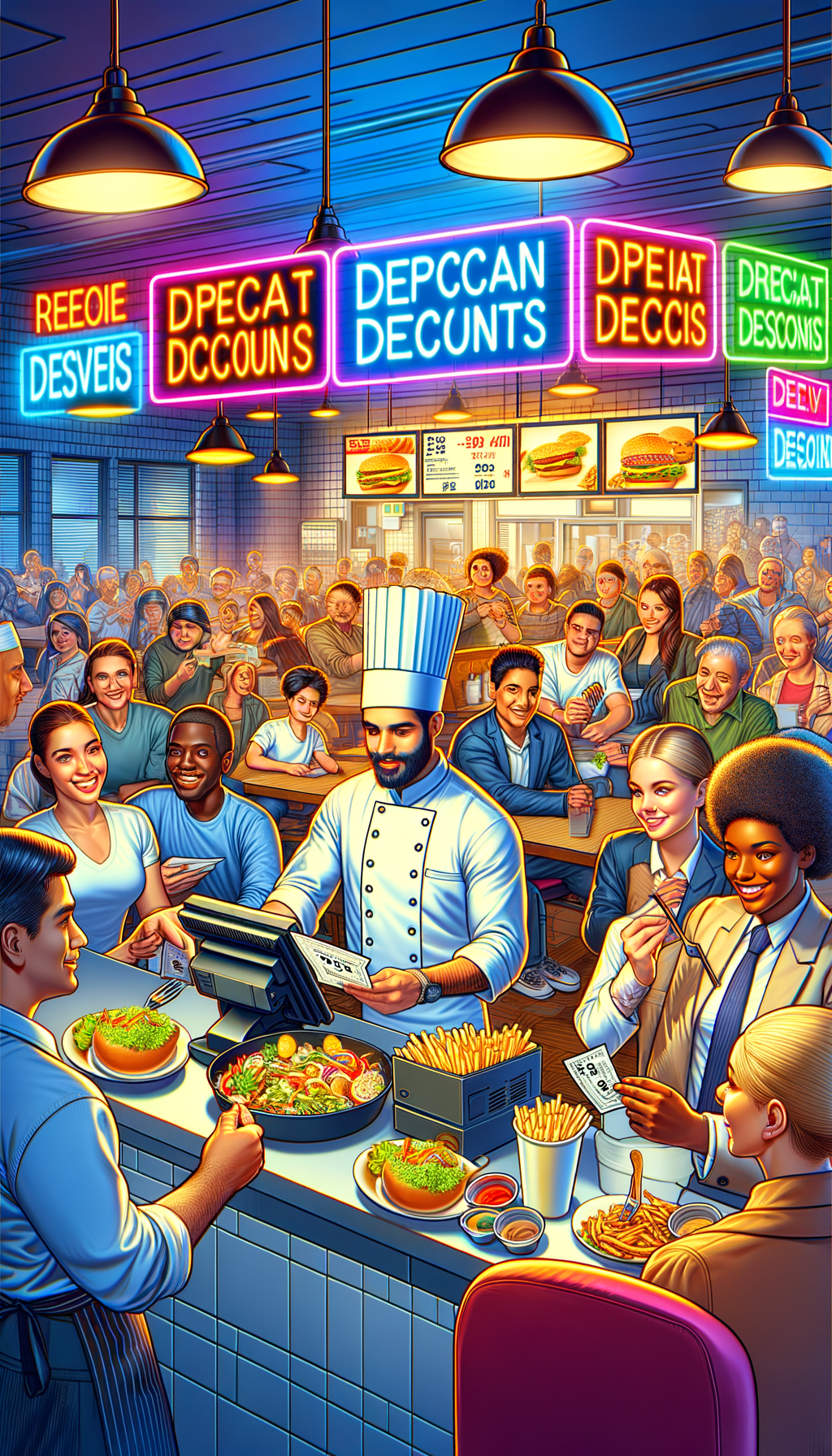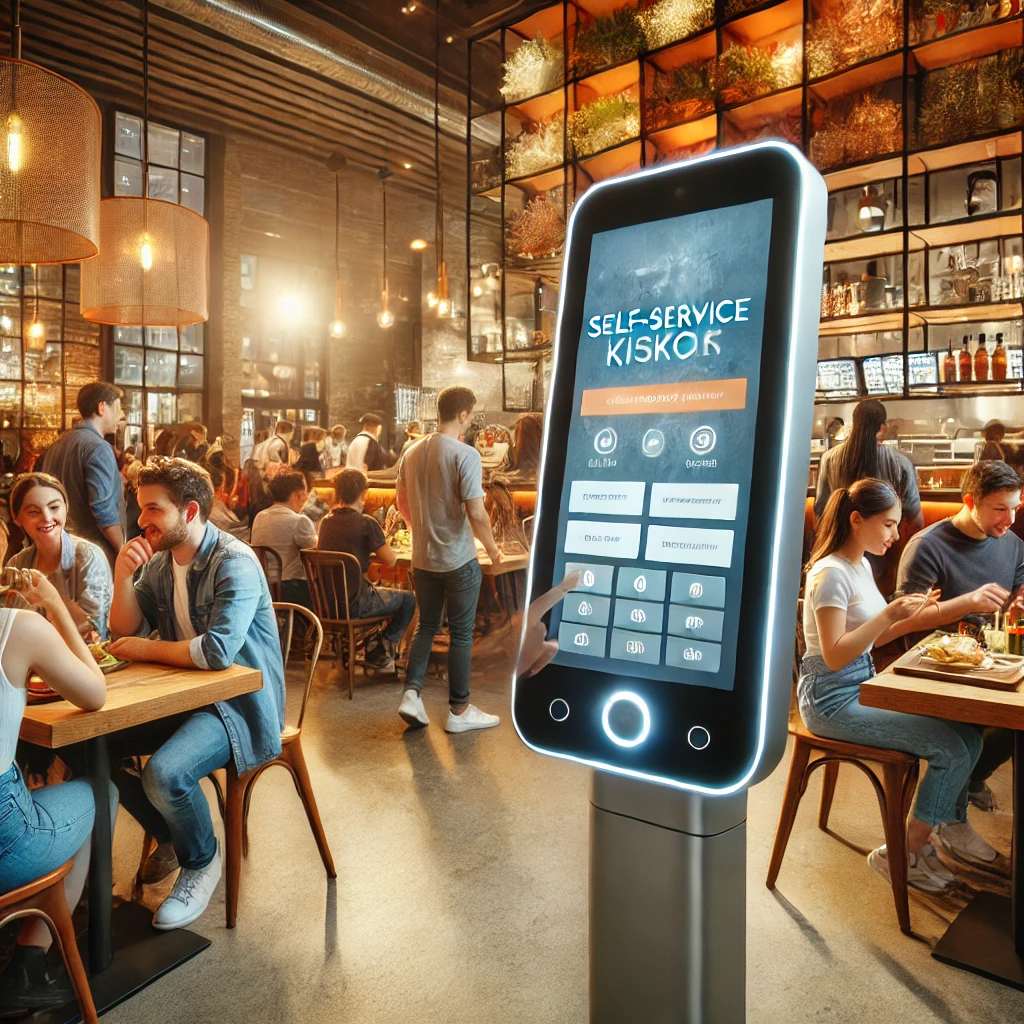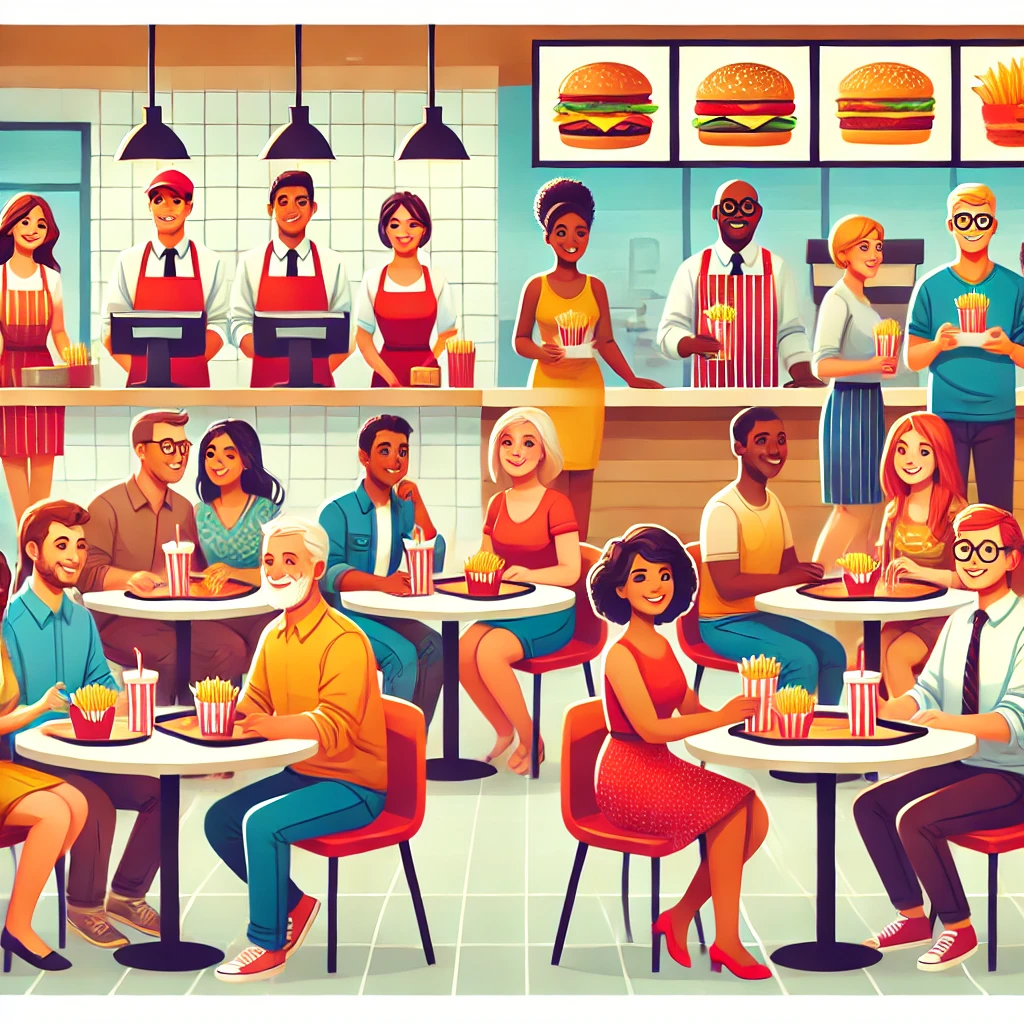Navigating Economic Turbulence: QSR Survival Strategies
Kiosk vs. Counter Ordering: Pros, Cons, and the Best Strategy for Your Restaurant
How QSRs Can Leverage AI to Boost Efficiency, Profits & Customer Satisfaction
How QR Codes Enhance Guest Experience and Boost Restaurant Efficiency
Navigating QSR Strategies: From Discounts to Loyalty in 2024
Elevating Guest Experience: Personalization & Predictive Insights
Revolutionizing Personalization in Guest Services
Introduction
In an increasingly competitive hospitality landscape, personalization has become a key differentiator for businesses aiming to enhance the guest experience. By harnessing customer data and preferences, establishments can tailor their services to meet individual needs, creating memorable experiences. This shift towards a personalized approach not only fosters loyalty but also drives customer satisfaction, encouraging repeat visits.
Businesses can leverage advanced technologies such as AI and machine learning to analyze guest behaviors and preferences. This data enables them to offer customized recommendations, ranging from room selections to personalized welcome messages. As a result, guests feel valued and understood, leading to a more enjoyable stay. Hotels and restaurants that prioritize personalization are likely to see an increase in customer retention and positive reviews, further solidifying their reputation.
Moreover, the importance of staff training cannot be overstated. Employees who understand the value of personalized service can create deeper connections with guests, enhancing their overall experience. As the industry continues to evolve, the focus on personalization will only grow stronger, setting new standards for guest expectations.
The Power of Predictive Menus in Dining
In the realm of dining, predictive menus are transforming how guests choose their meals. By analyzing past dining habits and preferences, restaurants can curate menus that proactively suggest dishes, improving the dining experience. This approach not only streamlines the decision-making process for guests but also increases the likelihood of upselling and higher sales.
Predictive menus rely on sophisticated algorithms that take into account variables such as weather, seasonal ingredients, and even trending dishes. For example, a restaurant might highlight hearty, warm dishes during colder months while offering light, refreshing options in the summer. This level of foresight ensures that guests are presented with options that align with their current preferences and situation, creating a more satisfying dining experience.
Furthermore, implementing this technology can lead to more efficient kitchen operations. By anticipating what dishes will be popular at any given time, kitchens can manage their inventory and reduce food waste, ultimately contributing to a more sustainable business model. As predictive technology advances, we can expect an even more refined approach to menu offerings in the future.
Creating Seamless Interactions Across Platforms
The guest experience today is multi-faceted, often spanning various platforms and devices. As such, creating seamless interactions across these touchpoints is crucial for enhancing overall satisfaction. Whether guests are booking a reservation online, checking in via a mobile app, or providing feedback through social media, a consistent and integrated experience is essential.
To achieve this, businesses must invest in technology that connects all guest interactions. Implementing a unified communication system allows for real-time updates regarding reservations, menu changes, or special promotions, ensuring that guests are well-informed throughout their journey. Such integration not only improves efficiency but also reduces friction, making interactions feel more fluid and intuitive.
Moreover, businesses should prioritize creating user-friendly interfaces that cater to diverse guest demographics. As technology becomes more prevalent, it is vital to offer options that are accessible and straightforward for everyone. By focusing on seamless interactions, businesses can foster a sense of loyalty and encourage guests to return, knowing they will have a consistently excellent experience.
Future Trends in Guest Experience Enhancement
Conclusion
As we look to the future, several trends are poised to shape the guest experience landscape. From the growing emphasis on sustainability to the increasing integration of artificial intelligence, businesses must stay ahead of these developments to remain competitive. Providing personalized experiences, predictive dining options, and seamless interactions will be pivotal in attracting and retaining guests.
Sustainability, in particular, is becoming more important to consumers. Businesses that adopt eco-friendly practices and promote them effectively will resonate with environmentally conscious guests. This trend not only enhances the guest experience but also contributes to a positive brand image and loyalty.
Ultimately, the future of guest experience will rely on an adaptive approach, where businesses embrace change and continuously seek ways to innovate. By prioritizing personalization, predictive insights, and seamless interactions, the hospitality industry can elevate guest experiences to new heights, ensuring long-term success in a rapidly evolving market.
How QSRs Efficiently Cut Labor Costs in the Industry
Introduction
The Quick Service Restaurant (QSR) industry has been under immense pressure to balance customer demands and operational costs. One significant area where QSRs can achieve substantial savings is in labor costs. With rising wages and the need for efficient service, innovative strategies are essential for maintaining profitability while delivering quality food and service. In this article, we explore how QSRs effectively reduce labor costs through various methods.
Understanding the Labor Landscape in QSRs
The labor landscape in the QSR sector is both dynamic and challenging. With high turnover rates and varying peak hours, managing a workforce efficiently is crucial. QSRs must navigate the complexities of scheduling and staffing to ensure they have the right number of employees during busy times while avoiding overstaffing during slower periods.
By leveraging data analytics, QSRs can better predict customer traffic and adjust staffing levels accordingly. This proactive approach allows them to reduce labor costs significantly without compromising customer satisfaction. Additionally, understanding labor regulations and wage trends helps QSRs make informed decisions about hiring and workforce management.
Innovative Technologies Transforming Labor Management
Technology plays a pivotal role in how QSRs manage labor costs. Implementing advanced point-of-sale systems and employee scheduling software streamlines operations and minimizes the time spent on administrative tasks. These tools enable managers to focus more on customer service and less on paperwork.
Moreover, automation in food preparation and service can also lead to a decrease in the need for manual labor. Self-service kiosks and mobile ordering apps not only enhance the customer experience but also reduce the number of staff required to operate the restaurant efficiently, further driving down labor expenses.
Streamlining Operations for Cost Efficiency
Optimizing operational processes is another critical factor in reducing labor costs for QSRs. By analyzing workflows and identifying bottlenecks, operators can reorganize tasks to ensure staff are utilized effectively. For instance, cross-training employees to handle multiple roles can provide flexibility in staffing and increase efficiency during peak hours.
Additionally, adopting lean management principles helps QSRs eliminate waste and improve efficiency in food preparation and service delivery. This holistic approach to operations not only cuts costs but also enhances employee morale, as workers see the benefits of a well-organized work environment.
Training and Retention Strategies for QSR Employees
Investing in employee training and development is essential for maintaining a stable workforce in the QSR industry. Offering comprehensive training programs not only equips employees with the necessary skills but also fosters loyalty and reduces turnover.
Furthermore, implementing retention strategies such as competitive wages, benefits, and a positive work culture can significantly impact labor costs in the long run. QSRs that prioritize employee satisfaction often see improved productivity and lower recruitment costs, creating a win-win scenario for both management and staff.
Conclusion
In conclusion, QSRs can effectively reduce labor costs through a combination of strategic planning, technological innovation, streamlined operations, and a focus on employee retention. By adopting these practices, QSRs can enhance their operational efficiency, improve employee satisfaction, and ultimately boost their bottom line. Understanding and implementing these strategies is essential for staying competitive in today’s fast-paced food service industry.
Navigating the Top Challenges in Quick Service Restaurants
Identifying Key Challenges Faced by Quick Service Restaurants
Introduction
The quick service restaurant (QSR) industry is dynamic and competitive, often presenting unique challenges that can hinder growth and profitability. Understanding these hurdles is crucial for operators aiming to enhance their service offerings and improve customer satisfaction. From labor shortages to food safety concerns, quick service restaurants must navigate a multitude of issues to remain viable.
Labor shortages continue to plague the industry, with many establishments struggling to fill key positions. This not only impacts service speed but also employee morale and retention. Furthermore, the demand for skilled workers is at an all-time high, compelling QSRs to reassess their hiring practices and employee benefits to attract talent.
Additionally, food safety regulations are becoming increasingly stringent. Quick service restaurants must ensure they adhere to local health codes and safety standards, which requires regular staff training and investment in quality control measures. Failure to address these challenges can lead to severe repercussions, including fines and damage to the restaurant’s reputation.
Strategies to Improve Customer Service in Fast Food
Providing excellent customer service is pivotal for QSR success. Many consumers choose fast food not just for the food quality but for the speed and efficiency of service. Training staff to deliver prompt and friendly service can significantly enhance the customer experience and encourage repeat visits.
Implementing technology can also streamline service delivery. Self-service kiosks and mobile ordering apps reduce wait times and allow for a more customized experience for customers. These solutions not only improve service efficiency but also gather valuable data on customer preferences, which can inform menu adaptations.
Moreover, fostering a positive work environment contributes to better service. Happy employees are more likely to provide excellent customer interactions. QSRs should invest in employee training and development programs that empower staff and promote a culture of service excellence.
Enhancing Operational Efficiency in Quick Service Settings
Operational efficiency is critical for QSRs to maximize profitability. Streamlining kitchen operations through better layout and workflow practices can decrease food preparation times and minimize waste. This includes regular assessments of equipment and supplies to ensure they meet operational needs.
Additionally, implementing inventory management systems can greatly assist in tracking stock levels and reducing overhead costs. By analyzing sales data, QSRs can predict demand more accurately, thereby optimizing their ordering processes and minimizing excess food waste.
Collaboration with suppliers is another avenue for enhancing operational efficiency. Establishing strong relationships with suppliers can lead to better pricing, timely deliveries, and access to high-quality ingredients, ultimately benefiting the overall service quality.
Adapting to Market Trends and Consumer Preferences
The quick service restaurant landscape is continually evolving, driven by changing consumer preferences and market trends. To remain competitive, QSRs must be agile and responsive to these shifts. This includes offering healthier menu options, accommodating dietary preferences, and incorporating sustainable practices.
Regularly updating the menu based on seasonal ingredients and popular food trends can attract new customers and retain existing ones. Additionally, promoting plant-based and organic choices aligns with the growing demand for healthier eating options and can set a restaurant apart from its competitors.
Finally, leveraging social media and digital marketing strategies is essential to engage with customers effectively. By staying active on social platforms, QSRs can raise brand awareness, promote new offerings, and gather customer feedback to improve their services.
Conclusion
The challenges faced by quick service restaurants are multifaceted, but with strategic planning and implementation, they can be effectively addressed. By focusing on customer service, operational efficiency, and market adaptability, QSRs can not only overcome these obstacles but thrive in a competitive marketplace.
Maximizing Restaurant Profits with Self-Service Kiosks
Introduction
The restaurant industry is constantly evolving, and technology plays a crucial role in shaping its future. One of the most significant innovations in recent years is the self-service kiosk. These interactive devices are not just a trend; they represent a pivotal shift in how restaurants operate and engage with customers. This article explores how leveraging self-service kiosks can drive revenue growth for restaurants, enhance customer experiences, and streamline operations.
Understanding Self-Service Kiosks in Restaurants
Self-service kiosks are digital interfaces that allow customers to place orders, customize meals, and make payments without the need for direct interaction with staff. These kiosks can be placed strategically throughout the restaurant, providing a user-friendly experience that caters to tech-savvy diners. By reducing wait times and enabling customers to make informed choices at their own pace, restaurants can improve customer satisfaction and increase order accuracy.
Moreover, these kiosks can collect valuable data regarding customer preferences and behavior. This data can be harnessed to tailor marketing efforts, optimize menu offerings, and enhance the overall dining experience. Understanding the functionality and advantages of self-service kiosks is essential for restaurant owners looking to stay competitive in a rapidly changing market.
Benefits of Self-Service Kiosks for Revenue Growth
The implementation of self-service kiosks can lead to significant revenue growth for restaurants. First and foremost, they can increase order volume by encouraging customers to try new items or upgrade their meals through upselling and cross-selling prompts. This is particularly effective in fast-casual and quick-service settings, where speed and efficiency are paramount.
Additionally, self-service kiosks can minimize labor costs by reducing the number of staff needed for order taking, allowing those employees to focus on food preparation and customer service. This shift can lead to improved operational efficiency and a better allocation of resources. As a result, businesses can enhance profit margins while maintaining high standards of service and quality.
Implementing Self-Service Kiosks Effectively
Successful implementation of self-service kiosks requires careful planning and consideration. Restaurants should invest in user-friendly interfaces that are easy to navigate, ensuring that customers of all ages can use them comfortably. Training staff to assist customers with the kiosks is also vital, as it can help alleviate any confusion or frustration that may arise during the transition.
Moreover, integrating kiosks with existing point-of-sale systems is crucial for a seamless experience. This allows for real-time updates on menu items and pricing, ensuring that customers receive accurate information. Gathering customer feedback during the initial rollout will help identify areas for improvement and enhance the overall effectiveness of the kiosks.
Future Trends: Self-Service Kiosks in Dining
As technology continues to advance, the capabilities of self-service kiosks are expected to evolve. Future trends may include the integration of artificial intelligence to provide personalized recommendations based on past orders or preferences. Additionally, features such as mobile ordering and contactless payment options will become even more prevalent, catering to consumer demands for convenience and safety.
Restaurants that embrace these innovations will not only enhance their customer experience but also position themselves as industry leaders. By staying ahead of technological advancements, they can continually adapt and thrive in an increasingly competitive landscape.
Conclusion
In conclusion, self-service kiosks offer an array of benefits that can drive revenue growth for restaurants. By understanding their functionality, leveraging their advantages, implementing them effectively, and staying informed about future trends, restaurant owners can harness the power of technology to enhance their operations and elevate the dining experience for their customers.


